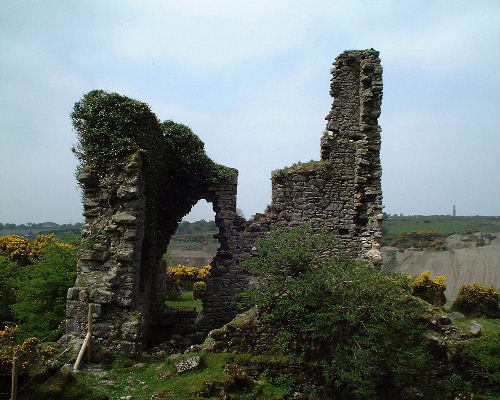A view of
South Caradon Mine
Sump Shaft
SX265700
250
fathoms deep
Pump Engine
|
A view of South Caradon Mine |
Sump Shaft
SX265700
|
 |
Sump
shaft is the deepest on the mine and was sometimes called
Engine shaft. Around it lies a complex of buildings that include
a winding engine, pump engine, capstan
engine and an explosives magazine.
The expanse of dumps beneath the buildings give a clue to the far larger scale of construction that lay below the ground, out of sight. The shaft at 250 fathoms deep formed the lowest point of the mine and the point to which water drained, the sump. This hole in the ground extends 1500 ft below the level of the valley floor in modern measurements this is 457 metres, almost half a kilometre! Caradon Hill itself only rises 371M above sea level and sump shaft is almost four times as deep as the height between the valley floor and the hills summit. |
||||||
This building housed the
first engine to be installed at the mine, probably by William West. It
was built in 1837 and different sources place its size at 30", 35" or 45". Prior
to its construction the pump was powered by flat-rods driven by a water
wheel down in the valley. As the workings expanded underground a larger
50" engine was installed (possibly in the late 1840's) and this was still
in place when the mine was finally closed.
|
Neil Parkhouse Collection from Messenger The shaft lies on the right of the picture with the headgear standing above it. The buildings wing wall can be clearly made out from the footpath and a rough arch has been formed by the walls partial collapse. The chimney remains as a stump behind the large boiler house which is built below ground level and was divided to house three boilers. The nearby chimney that stands to full height served a steam capstan that also served the shaft. Sump shaft was sunk vertically down to 20 fathoms where it met main lode which underlay at 40 degrees to the north. Water was raised to the main adit level which opened out onto the valley floor underneath the yard. |
|
On
many mine sites in Cornwall dangers may still exist, many hidden.
|